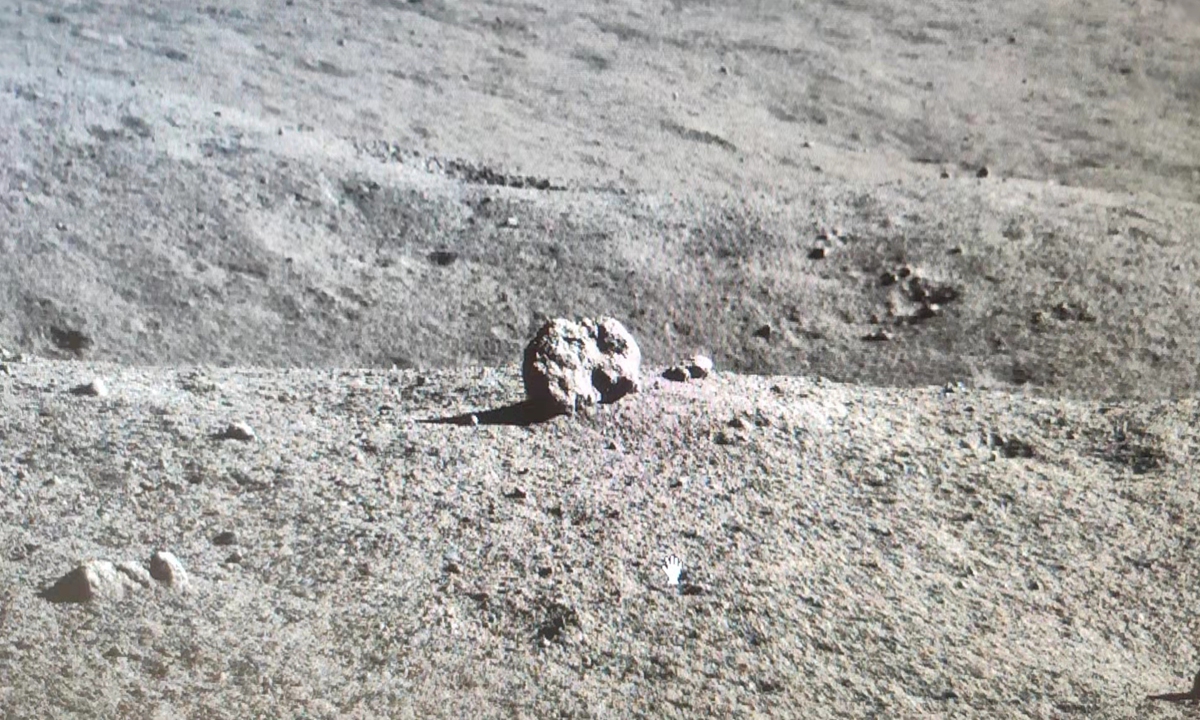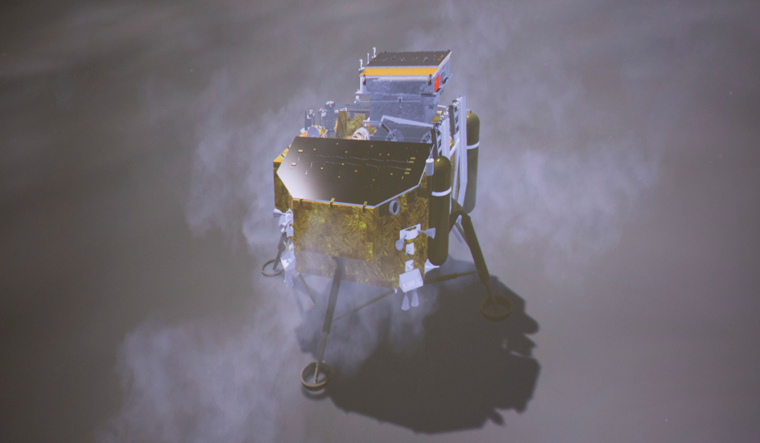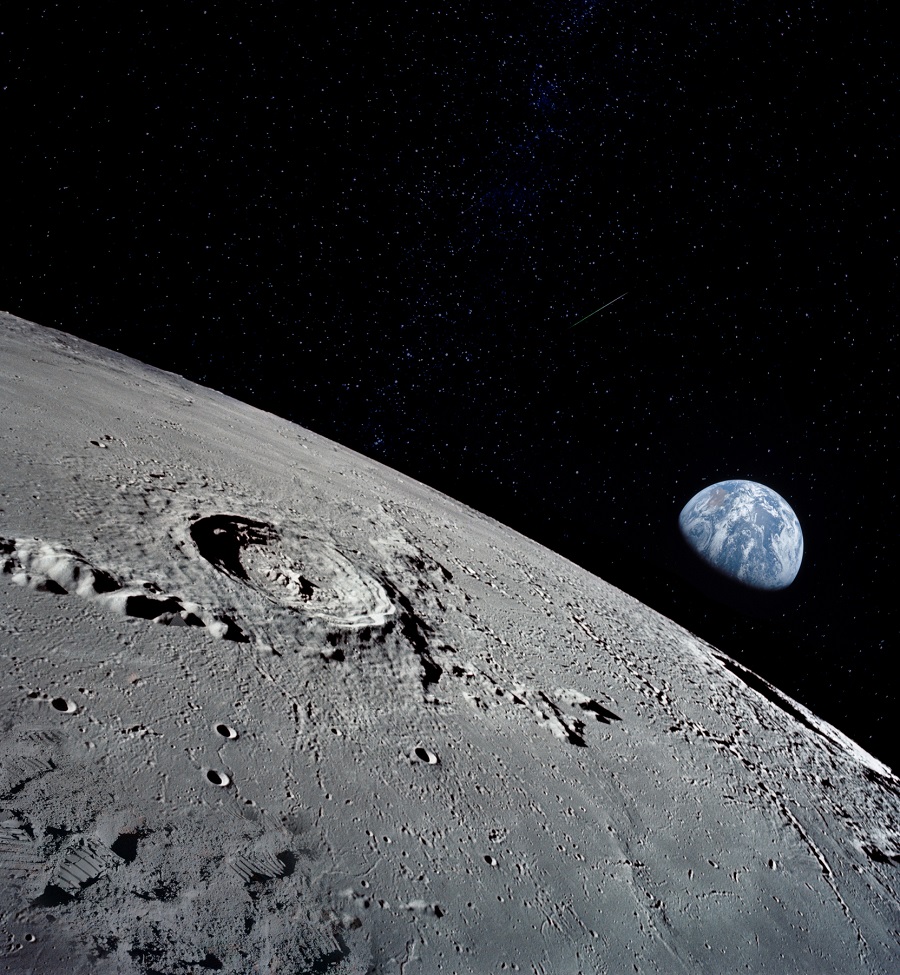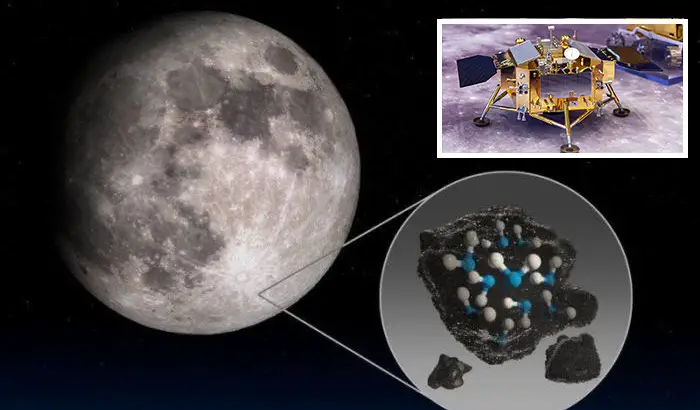Evidence from China’s Chang’e-5 lunar lander indicates that there is as much as 120 parts per million of water (as hydroxyl and/or H2O) in the lunar regolith, making it the first time that in-place water detection has been made on the moon.
Researchers in the field of space exploration stated Sunday that the recent discovery of a critical resource on the moon is wonderful news for humanity’s efforts to construct and manage research stations and perhaps migrate to Mars
Using data from the Chang’e-5 lander, a team led by Lin Yangting and Lin Honglei from the Institute of Geology and Geophysics of the Chinese Academy of Sciences observed water signals in reflectance spectral data from the lunar surface, and their study was published in Science Advances on Saturday, a journal of the American Association for the Advancement of Science.
Solar wind “implantation” is the most common explanation given by scientists in a published study for the presence of water on the moon.
An extensive body of work conducted over the last decade has discovered evidence of water (in the form of either hydroxyl or H2O) on the moon. There had previously been no in-situ measurements of the lunar surface. This void was filled by the Chang’e in-situ measurement.

Astronomer Song Zhongping told the Global Times that the presence of water on the moon might sustain human life and provide fuel for spacecraft like rockets.
If this is true, then the moon’s resources might let humans explore farther into space. Song also noted that the moon may be a fantastic starting location for human migration to Mars.
After a successful landing in Siziwang Banner, Inner Mongolia Autonomous Region, on December 17, 2020, China’s Chang’e-5 returned about two kilos of lunar samples to Earth, making it the first lunar sample return mission since 1976.
According to Lin, the Chang’e-6 and -7 missions will continue to seek water on the moon, and their research will build the groundwork for future missions.
State authorities have authorized the fourth phase of China’s lunar missions, which would comprise new Chang’e-6, -7, and -8 missions, which are likely to be carried out in the next decade, according to Wu Yanhua, deputy administrator of the China National Space Administration (CNSA).
The Chang’e-7 probe will be sent to the lunar South Pole first, followed by the Chang’e-6 mission, which will collect samples and return them from the lunar South Pole.

Using Chang’e-8, the last component of the fourth phase, the International Lunar Research Station will be built in its basic form.
A rover from Chang’e-4, Yutu-2, was reported by the CNSA to have traveled more than 1,000 meters on the moon’s surface as of Thursday.
As mission insiders tell it, the cube-shaped “mystery house” that the rover saw last month is really a rabbit-shaped rock. During Yutu-2’s 38th lunar day of the trip, the rover made its way straight toward the rock to have a better look at it.
The rover’s onboard full-color camera revealed the object’s real nature after getting closer and gaining some perspective with the help of the ground support crew.
Just before the three-year anniversary of the mission’s amazing achievement, the Yutu-2 and Chang’e-4 lander shot images of each other, commemorating its complete success and the current stage of the rover taking place.
China’s “jade bunny” rover was finally able to meet its mate on the moon, and many people took to social media to express their joy and excitement.

‘Mystery hut’ spotted by China’s moon rover gets an explanation
In the Yutu-2 rover’s “mystery cabin,” or “house,” on the far side of the moon, a rock has been discovered. As expected, the answer to the lunar riddle that captivated so many of us in December is… well, hilarious.
I was reminded of the latest rover team update by SpaceNews and Space.com reporter Andrew Jones, who described it as “so lackluster it is brilliant” in his tweet on Friday.
A little lumpy rock perched on the crater’s rim turns out to be the mysterious cube-shaped “hut.” Just though the rover’s initial photograph showed it as much larger and more mysterious, does not mean it is. When the rover got closer, it was able to discern the object’s real nature.
Ah. We have an update from Yutu-2 on the lunar far side, including an image of a cubic shape on the northern horizon ~80m away from the rover in Von Kármán crater. Referred to as “神秘小屋” (“mystery house”), the next 2-3 lunar days will be spent getting closer to check it out. pic.twitter.com/LWPZoWN05I
— Andrew Jones (@AJ_FI) December 3, 2021
But wait, there is more. Every time it becomes tastier. Since the rock’s hunched form resembles a bunny crouching down with two carrots in front of it, it has been nicknamed “jade rabbit.” Behind the rock’s “rump,” there are a few delicate spherical fragments that look like rabbit feces.
The Japanese name for the Yutu-2 rover translates to “Jade Rabbit,” thus it is almost as if the rover had a mascot of its own.
The Chang’e-4 mission, which included Yutu-2, was launched in 2019 by the China National Space Administration with the goal of exploring the far side of the moon (where it is not always dark). Yutu-2 relies on the sun for energy, thus it goes into hibernation from time to time. In order to have a closer look at the “Mystery Hut,” it took a while.
In the past, strange-looking space objects have been detected. Curiosity over the “spoon” and “faces” on Mars has also piqued.
Oh, this is amazing. Close to tears. Ourspace has published an update on the “mystery hut” and it’s so underwhelming it’s brilliant. It’s just a small rock on a crater rim that they’re now calling “jade rabbit” for its appearance. Source: https://t.co/frrMKH7RWM https://t.co/GFCIRzqmDu pic.twitter.com/jpDLDS8TZu
— Andrew Jones (@AJ_FI) January 7, 2022

